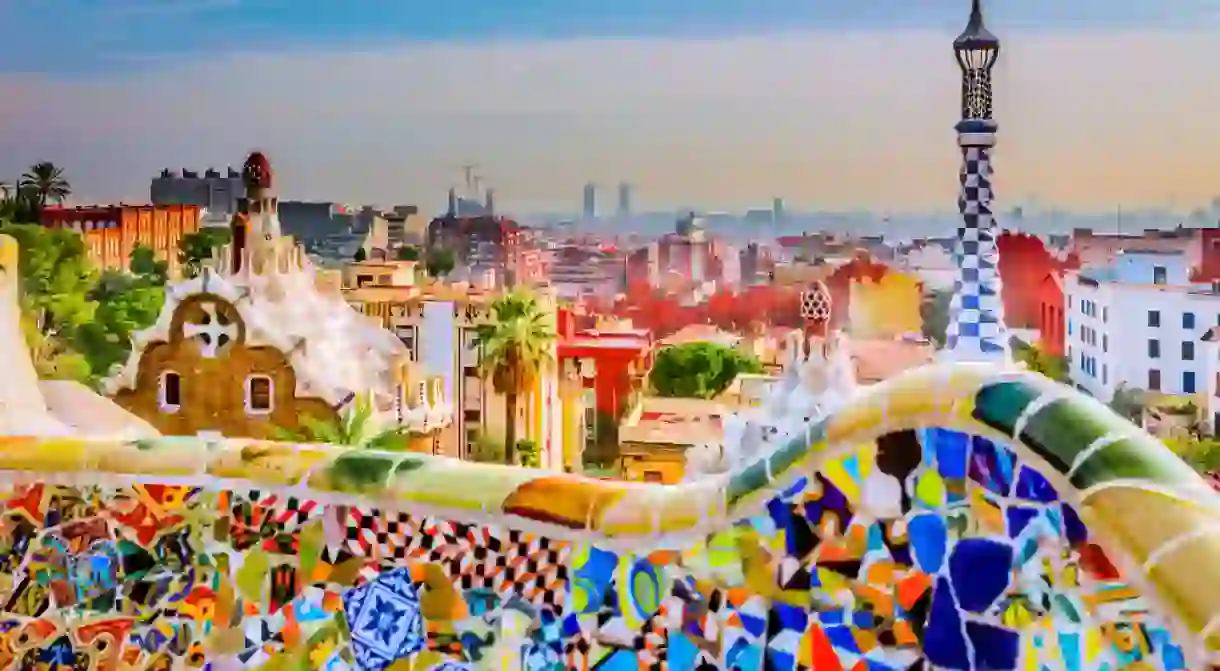Must-Visit Gaudí Buildings in Barcelona

When it comes to Barcelona, there is one architect whose name really stands out: Antoni Gaudí. This turn of the 20th century master helped define the movement known as Catalan Modernism and make Barcelona the architectural marvel it is today. Here are ten of his most remarkable designs you should visit.
The Sagrada Família
Historical Landmark

Perhaps the most famous of all Gaudí’s designs, the Sagrada Família is a Roman Catholic basilica which has been under construction since 1882. Gaudí was well aware that he would not be around to see its completion but left plans to guide future architects and masons. This exceptional oeuvre will boast three grand facades, some 18 spires and a myriad of symbolic architectural details referencing the Christian faith. Ongoing work to complete the masterpiece continues, however many believe that this task is finally approaching completion.
The Casa Batlló
Historical Landmark

This outstanding townhouse located on the prestigious Passeig de Gràcia was purchased by the Batlló family in 1900. Unhappy with its appearance, they soon commissioned Antoni Gaudí to redesign the facade and interior, expanding the central light well to brighten the rooms. This redesign gave the building its astounding exterior which earned it the local nickname ‘Casa dels Ossos’ or ‘House of Bones’ due to its skeletal appearance.
Casa Milà
Historical Landmark

Another of Gaudí’s buildings to be best known by its nickname, Casa Milà or ‘La Pedrera’ is a somewhat austere looking construction on the Passeig de Gràcia. Its nickname means ‘the Open Quarry’ and is a reference to the combination of stone and metal, giving it a rough appearance which was controversial at the time of opening. This was the last private residence to be designed by Antoni Gaudí and was completed in 1906.
Palau Güell
Historical Landmark

Located just a few metres from La Rambla in the El Raval neighbourhood of Barcelona, the Palau Güell is a magnificent townhouse which belonged to the Güell family. Eusebi Güell commissioned Gaudí to design a modern townhouse destined to entertain members of high-society. The building includes features such as hidden windows to enable hosts to see their guests upon arrival to ensure they were appropriately dressed for the occasion.
Bellesguard
Historical Landmark

This historic monument stands on the site of the castle of King Aragon built in the 15th century, which fell into disrepair when the king died without an heir. Acquired by the Figueres family in 1900, all that remained of the castle was a few walls. Gaudí was commissioned to rebuild the Bellesguard house and felt the need to stay true to the history of the site by drawing inspiration from a Medieval castle while adding his own touches such as neo-Gothic features and a reflection of natural themes.
Casa Calvet
Historical Landmark

Of all of Gaudí’s designs, the Casa Calvet is most remarkable for its relatively conventional appearance – making it rather unusual for a Gaudí building. Squeezed between pre-existing buildings in the Eixample neighbourhood, the facade displays a symmetry unlike what is found in many of Gaudí’s more notable works. Yet, upon closer inspection, the design still includes some Modernist features and the mark of its master.
Teresian College
Historical Landmark
Güell Pavilions
Historical Landmark

Casa Vicens
Historical Landmark

This exuberant townhouse has the honour of being the first private residence designed by Gaudí and as such is a seminal design in the history of Catalan architecture. While Gaudí is mostly associated with the Catalan Modernist movement, he borrowed influences from a variety of sources and in Casa Vicens the most obvious influence is the Neo-Mudéjar style. Geometric patterns, horse-shoe arches and ornamental brickwork all feature prominently in this remarkable design.
The Park Güell
Historical Landmark

One of the most stunning green spaces in Barcelona, the Park Güell was never intended as a park at all. The original plan designed by Gaudí and his patron at the time Eusebi Güell was to construct a modern housing estate modelled on the British garden cities. After building the market space, public arena and guard’s house they opened a model home to the public but never received any interest. Eventually the plans were dropped and Gaudí moved in to the home where he remained until his death in 1926.
Want to see more of Barcelona? Check out these tours we highly recommend!
Historical Landmark

From Gaudí’s architectural wonders to lively local markets and breathtaking coastal views, Barcelona is full of amazing attractions! Savor traditional tapas, explore the city’s rich past, or go on a picturesque Mediterranean bike ride. There is the ideal tour waiting for you, regardless of your interests in adventure, cuisine, or the arts. Discover Barcelona’s top features in a way that will never be forgotten by searching online for expert-led experiences.













